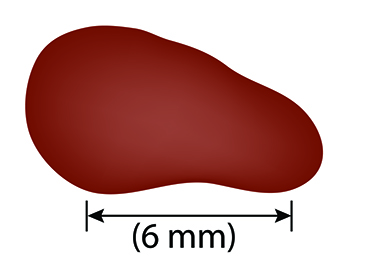How to Perform a Skin Self-exam
By doing a simple skin self-exam every month, you can improve your chances of finding a skin cancer early. In addition to doing routine skin self-exams, you should have your skin checked regularly by a doctor or nurse specialist. A skin exam can be done during your regular checkups. Most skin cancers, if found early, are curable. It is important to check yourself regularly especially if you have a strong family history of skin cancer or if you’ve been diagnosed before.
The "A-B-C-D-E Rule" for Early Melanoma Detection
When performing your monthly skin self exam, be on the lookout for new or existing moles that fit the "A-B-C-D-E Rule."





How to Protect Yourself from Skin Cancer
Sun damage cannot be completely reversed. However, several precautions can be taken to reduce your risk of developing future skin cancers.
- Minimize sun exposure from 10 AM to 4 PM when the sun’s rays are the strongest. If you enjoy outside activities, try to schedule them outside of “peak sun hours.”
- Apply a sunscreen with an SPF of 30 or greater at least one half hour before going outdoors and reapply as directed on the product label. Look for products containing avobenzone, titanium dioxide, or zinc oxide. Chose a “very water resistant” formula if you will be sweating or in water, however, remember that even these must be reapplied every 80 minutes.
- Protect your lips with lipstick or a lip balm containing sunscreen.
- Wear protective clothing, including a long-sleeve shirt, wide-brimmed hat and sunglasses.
- Avoid use of the UV beds at tanning salons.
- Make sure to use sunscreen on overcast days. The ultraviolet rays can be as damaging to your skin on cloudy, hazy days as they are on sunny days.
- Use a sunscreen while at lower latitudes or high altitudes. The sun is stronger near the equator and at high elevations, where the sun’s rays strike the earth most directly.
- If you need a little “color,” use a sunless tanning lotion or get a spray tan.

